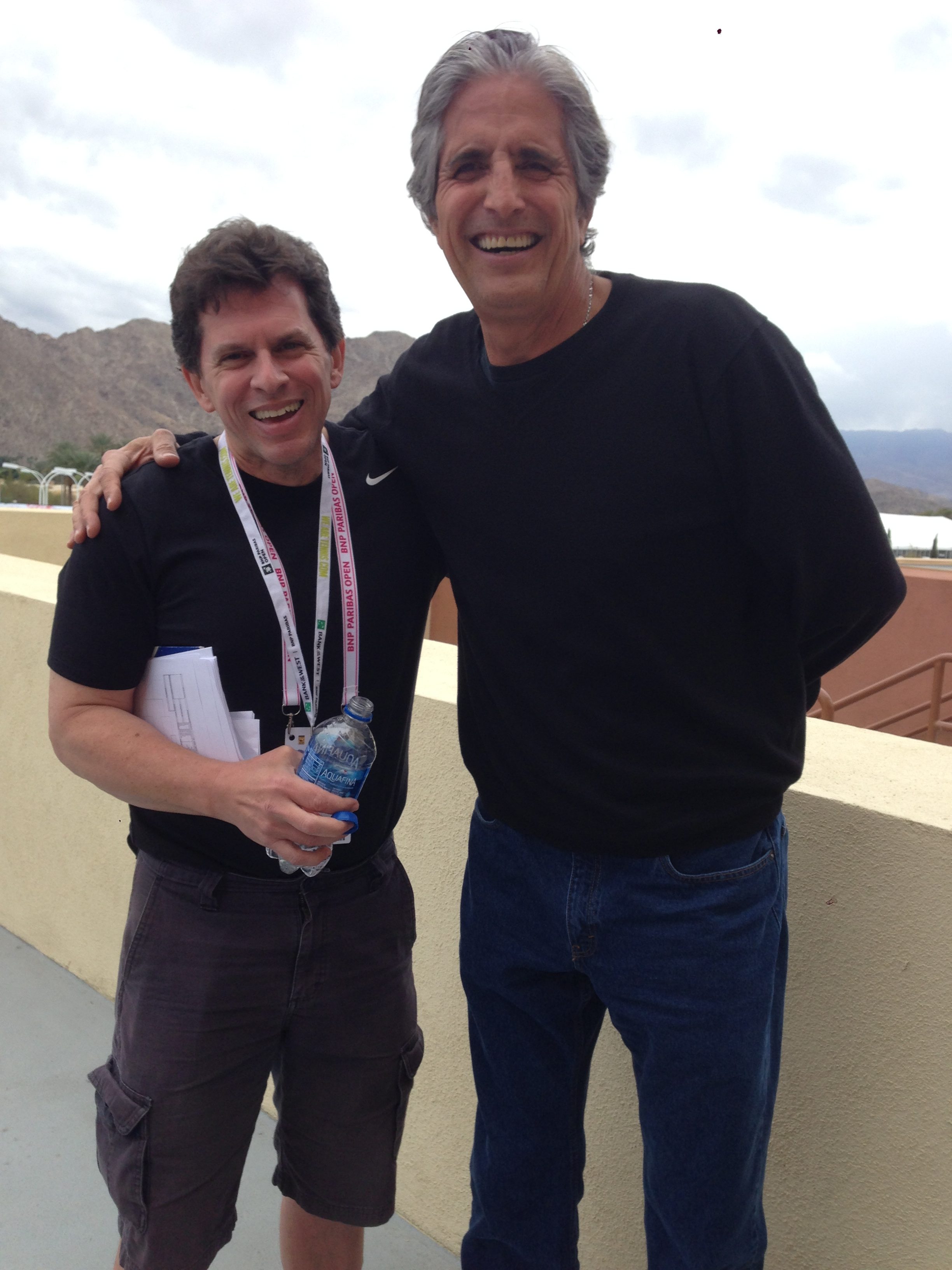- The Australian Open Has Always prided Itself As the “Happy Slam” by Alix Ramsay
- Australian Open Draws and Order Of Play for Friday, January 24, 2025
- Ricky’s pick for the Australian Open semifinal between Djokovic and Zverev
- Courageous Keys Stuns Swiatek for First Australian Open Final
- Australian Open Draws and Order Of Play for Thursday, January 23, 2025
- Ricky’s pick for the Australian Open quarterfinal between Sinner and De Minaur
- Australian Open Draws and Order Of Play for Wednesday, January 22, 2025
- Goran Ivanisevic Is No Longer Coaching Elena Rybakina
- Ricky’s pick for the Australian Open quarterfinal between Alcaraz and Djokovic
- Australian Open Draws and Order Of Play for Tuesday, January 21, 2025
- Tennis Report From Australian Open: Novak Making A Run by Alix Ramsay
- Australian Open Draws and Order Of Play for Monday, January 20, 2025
- Five-set frenzy continues in third round of Australian Open
- Australian Open Draws and Order Of Play for Sunday, January 19, 2025
- Pam Shriver’s Car Containing Grand Slam Trophies Stolen in California
Celebrating A Legendary Tennis Champion: Richard “Pancho” Gonzalez
- Updated: May 9, 2018

Richard Pagliaro and Greg Gonzalez. Photo by Lovey.
By Richard Pagliaro
INDIAN WELLS—A mural of iconic champion Roger Federer adorns the wall of the BNP Paribas Open stadium.
On a night when the GOAT returned to action, memories of the man many consider the original GOAT—Pancho Gonzalez—came rushing back to life at Indian Wells today from those who knew him best.
Gonzalez’s sons, Richard and Danny, and nephew Greg Gonzalez made the trip to the BNP Paribas Open to watch tennis and share some of their personal stories of the iconic Hall of Famer with 10sBalls.com.
Widely regarded as one of the most explosive and charismatic champions in history, Gonzalez’s legendary on-court intensity could contrast with an off-court sensitivity.
“My uncle was a very tough man, but also kind in many ways to family, friends and many others, albeit mostly secretly,” said Greg Gonzalez, who recently retired as a CPA, now serves as Director of the Richard “Pancho” Gonzalez Youth Foundation and bears a striking resemblance to his uncle.
If American tennis were ever to adopt another name, you might just call it Pancho Gonzalez’s game.
Wielding a wood racquet his mother bought him from an L.A. department store when he was 12 years old, the son of Mexican immigrants was a self-taught player who never took a formal tennis lesson in his life.
Yet he was such a genius he grew from humble beginning at Exposition Park into one of the world’s most recognized and respected athletes.
“He was a straight shooter,” son Danny Gonzalez said. “It was black and white with him. Fans loved him or hated him, but everyone wanted to see him.”
In a legendary career that spanned nearly three decades Gonzalez conquered elite champions from multiple eras including Don Budge, Gardnar Mulloy, Tony Trabert, Lew Hoad, Ken Rosewall, Rod Laver, Arthur Ashe and Jimmy Connors.
Gonzalez’s fluid and ferocious serve was his signature shot—“Pancho gets 50 points on his serve and 50 points on terror,” rival Jack Kramer once remarked—but he possessed an abundant tennis tool box and the tactical acumen to play the right shot at the right time. Gonzalez was an all-court artist who exhibited touch, angle and defensive skills as one of the most complete champions the sport has seen.
“He used to tell us ‘On the court there are no problems, only solutions,’ ” Danny Gonzalez said. “He said never fear losing the first set because you’ll learn from it and apply it in the second and third sets and be better.”
“He played with a 14-ounce racquet,” nephew Greg Gonzalez said. “He’d have lead tape on the head and later in his career he’d remove the tape later in matches for the feeling and psychological benefit of swinging freely.”
Tennis has been called physical chess and it was at a tennis camp where Danny Gonzalez got the best of his famous father for the first—and only time.
“He hadn’t played chess and I beat him twice,” Danny Gonzalez said. “I was so happy to beat him at anything. The next day he wanted a rematch and he beat me. I never beat him at chess again.
“Later, he told me he stayed up all night playing chess against himself to get better. He was so competitive he hated losing at anything. Tennis, chess, marbles, anything he absolutely hated losing and he was always learning always working to improve himself at everything he did.”
One of the most influential champions of all time, Gonzalez has been cited as a profound inspiration by Hall of Famers ranging from John Newcombe to Arthur Ashe to Gene Scott to Jimmy Connors, whom he played, defeated and mentored.
“The first time I saw Gonzalez, I couldn’t believe it,” Connors said in a 2013 interview. “I had never seen anything like it—he was a big man with power who moved with grace and elegance. You could not take your eyes off him. He offered good advice: Tennis and alcohol don’t mix…We were playing doubles together once and he asked for orange juice so I drank it too [not knowing it was spiked with alcohol]. After about the third changeover, I’m thinking ‘I’m not feeling too hot out here.’ It was a painful lesson to learn.”
Those who knew him best say his fierce fighting spirit and competitiveness—combined with his own desire to continuously learn—is what drove the man who had a passion for deconstructing opponents and building cares in his spare time.

Rob Stone and Richard Gonzalez Jr.. Photo by Lovey.
“One thing people may not know about my father, he was an innovator, who loved learning,” Richard Gonzalez said. “He dropped out of high school, but at age 57 he went back and got his GED because he valued education. I think one of the things he was most proud of was connecting with young people and trying to inspire and encourage them.”
Continuing that tradition the Gonzalez family runs the Richard “Pancho” Gonzalez Youth Foundation in L.A. that provides after school educational programs, tennis clinics and vocational instruction.
Fittingly, the man who owned one of the most iconic serves in the sport’s history continues to serve through his legacy.
The Foundation’s mission statement is “providing the underserved and other youth the opportunity to play tennis and learn.”
The 36-year-old Federer made history last month as the oldest ATP world No. 1 in history—a truly remarkable record.
Consider Gonzalez’s mind-blowing feat of defeating Rod Laver in the 1970 winner-take-all match at Madison Square Garden at age 42—a year after the Rocket swept the Grand Slam for the second time.
Two years later, Gonzalez captured the 1972 Des Moines title at age 44—he remains the oldest man to win an ATP singles title in history.
A true tennis giant, Gonzalez holds a record that may never be broken: He is the only player to be inducted into the International Tennis Hall of Fame while still playing.
What would Gonzalez think of today’s tennis?
“He’d love it—and he’d love the challenge of facing today’s champions,” said Danny Gonzalez, who still teaches tennis 30 hours a week. “If you gave my father the racquet and string technology today’s players have he’d do things with the ball you’ve never seen.”
Editors Note: Today’s forum included Richard JR., Danny, Greg Gonzalez, Richard Evans, Richard Pagliario, Francisco R., Lovey J., and our Director of Photography Rob Stone. We sat for almost 2 hours discussing the the Genius of The Mighty Pancho.
[passing the GED made Pancho a high school graduate]







